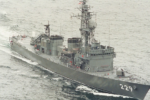8 NCR areas, several others on COVID-19 ‘Alert Level 4’-DOH

Department of Health (DOH) have placed under Alert Level 4 eight areas in Metro Manila and over 20 others in various regions over a high number of COVID-19 cases and hospital occupancy rate.
Health Undersecretary Maria Rosario Vergeire said Alert Level 4 means an area has been classified as moderate- to critical-risk and has a healthcare utilization rate (HCUR) higher than 70%.
Vergeire said the Metro Manila areas under Alert Level 4 are Las Piñas, Muntinlupa, Pateros, Quezon City, Taguig, Malabon, Makati, and San Juan.
Several other areas in the Cordillera region and Regions 1, 2, 3, 4A, 6, 7, 8, 10, 11, and 12 were also placed under the same alert level:
- Cordillera – Apayao, Baguio City, Benguet
- Region 1- Ilocos Norte
- Region 2 – Cagayan, Nueva Vizcaya, Quirino
- Region 3 – Angeles City, Bataan, Olongapo City, Pampanga, Tarlac
- Region 4A – Batangas, Cavite, Laguna, Quezon, Lucena City
- Region 6 – Iloilo, Iloilo City
- Region 7 – Cebu, Cebu City, Lapu-Lapu City, Mandaue City
- Region 8 – Tacloban City
- Region 10 – Bukidnon, Cagayan de Oro City, Camiguin
- Region 11 – Davao City
- Region 12 – General Santos City
Vergeire made the announcement on the first day of the two-week reimposition of enhanced community quarantine — the strictest quarantine level — in Metro Manila.
The DOH also said the highly contagious Delta coronavirus variant has been detected in all areas of the capital region.
“All National Capital Region areas now have a local Delta case,” Vergeire said at a briefing.
The Department of Health (DOH) on Friday reported 119 new cases of the Delta variant, pushing the country’s tally to 450. Eighteen of the new cases are in Metro Manila.
Vergeire explained that the alert levels are based on COVID-19 transmission and the HCUR of an area, as well as the presence of the Delta variant there.
“These alert levels will give us triggers kung ano ‘yung kailangan na nating gawin at saka kung ano ‘yung mga flagged areas natin (what we need to do and what our flagged areas are),” she said.
Alert Level 1 means transmission is low and decreasing, HCUR is low, and there is no Delta variant case in an area. These areas are at minimal to low risk, have a negative two-week case growth rate (TWGR) and HCUR lower than 50%.
Areas under Alert Level 1 are:
- Region 4B – Palawan
- Region 5 – Camarines, Norte, Albay
- Region 7 – Negros Oriental
- Region 8 – Biliran
- Region 9 – Zamboanga Sibugay
- BARMM – Maguindanao, Tawi-Tawi, Basilan
Alert Level 2 means transmission is low and decreasing, HCUR is low, but a Delta case is present. This classification also applies to areas with a low but increasing case count, or areas with low and decreasing transmission but increasing HCUR.
Level 2 also refers to areas that are at minimal to low risk but have positive TWGR, or areas that are at minimal to low risk, have a negative TWGR, but have an HCUR higher than 50%.
Areas under Alert Level 2 are:
- Cordillera – Ifugao
- Region 1 – La Union
- Region 3 – Zambales, Aurora
- Region 4B – Occidental Mindoro, Oriental Mindoro
- Region 5 – Camarines Sur, Sorsogon
- Region 6 – Guimaras, Negros Occidental
- Region 7 – Bohol, Siquijor
- Region 8 – Eastern Samar, Ormoc City, Samar (Western Samar)
- Region 9 – Zamboanga Del Norte, Zamboanga City
- Region 10 – Misamis Occidental
- Region 11 – Davao Del Norte, Davao De Oro, Davao Del Sur, Davao Oriental
- Region 12 – South Cotabato, Sarangani
- Caraga: Agusan Del Norte, Dinagat Islands, Surigao Del Norte, Agusan Del Sur, Butuan City
- BARMM: Cotabato City, Lanao del Sur, Sulu
Alert Level 3 means an area is at moderate to critical risk but has a bed occupancy rate lower than 70%. This level, along with Alert Level 4, does not take into account the presence of the Delta variant in an area.
Areas under Alert Level 3 are:
- Metro Manila – Caloocan, Mandaluyong, Manila, Marikina, Navotas, Parañaque, Pasig, Valenzuela, Pasay
- Cordillera – Abra, Kalinga, Mountain Province
- Region 1 – Ilocos Sur, Pangasinan, Dagupan City
- Region 2 – Batanes, Santiago City, Isabela
- Region 3 – Bulacan, Nueva Ecija
- Region 4A – Rizal
- Region 4B – Marinduque, Romblon, Puerto Princesa
- Region 5 – Masbate, Naga City, Catanduanes
- Region 6 – Aklan, Antique, Bacolod City, Capiz
- Region 8 – Leyte, Northern Samar, Southern Leyte
- Region 9 – Zamboanga del Sur
- Region 10 – Iligan City, Lanao del Norte, Misamis Oriental
- Region 11 – Davao Occidental
- Region 12 – Cotabato (North Cotabato), Sultan Kudarat
- Caraga – Surigao del Sur
Vergeire said the Philippines averaged 8,284 new COVID-19 cases per day from July 31 to August 6, higher than the average of 6,219 new infections in the week before.
Despite this, the country was still classified as a moderate-risk area with a 53.51% HCUR and 60.42% intensive care unit utilization rate as of August 3.






